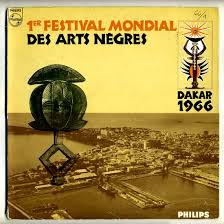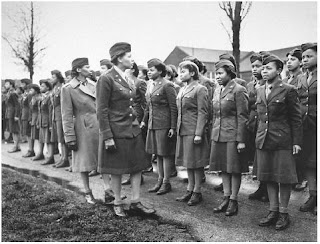Two profoundly affecting interviews highlight the power and importance of the imagination, art, endurance, hope, and hard, hard work. As 2016 comes to a close, please listen to the interviews below.
The first is an interview conducted by John Hockenberry of WNYC with Mr. Anthony Ray Hinton who was released in 2015 after spending 30 years on death row in Alabama. Mr. Hinton is an innocent man. I cannot do justice simply telling his story, it needs to be heard in his own words. Please, please take the time to listen. I will, however, share some of the comments about the interview, as they are instructive.
Krista from Oregon
BigGuy from Forest Hills NY
Judy Lerner from 11570
Wm. H. Evans, Media, Pennsylvania from Media, Pennsylvania
Doug McCanne from Portland, OR
Steve Carle from Edina, MN
antwuan wallace from brooklyn, ny
Edith Brown from Lisle, Illinois
The second interview was conducted by Brent Bambury of CBC, the Canadian public broadcasting company, with a former high school principal, Liz Dozier, in Chicago trying to address the enormity of the problem of youth violence and death in that city. She highlighted an innovative organization, Storycatchers. One of their programs is in the juvenile detention system and is designed to help these young citizens recognize who they are, their potential, the power of story telling to change lives. Theatre and storytelling are transformative experiences for all people in all societies, but especially those in dysfunctional settings.
 | |
| Anthony Ray Hinton (left) |
Krista from Oregon
My soul is deeply touched by this broadcast. Hope his story promotes change.
Dec 20, 2016, 8:58 PM
Hinton spent 30 years on death row. After 14 years imprisoned, he waited another 16 years for the court to review the exculpatory evidence of a ballistics test analysis.
Hinton rose above his horrific circumstances by using his imagination. Down to earth, he stayed true to his faith in God and strengthened his character. Before he was arrested, he was a good man, and after 30 years in prison, he has become a better man. He is a good example for us all. He strives to do what is right. He has forgiven those who have done him wrong, even though those wrongdoers of the Alabama justice system have not admitted doing him wrong and have not apologized at all.
May God bless us to be able to handle adversity as well.
Dec 20, 2016, 11:33 AM
Mr. Hinton's story is tragic-denied the ability to live a full life. But, no one has mentioned that the real murderer has gone FREE. No justice anywhere in this story.
Dec 20, 2016, 9:52 AM
John,
Thank you for reporting this travesty against Anthony Ray Hinton. His is just one of many similar stories. America's prisons are full of these stories. The imprisonment of Leonard Peltier is one; the attempted murder of Judi Bari for her out-spoken protests and leadership against the rapacious timber industry in California is another; the atrocities in Syria and Aleppo with no response to Assad's crossing that red line Obama laid down; the appointments to high government office being made by president-elect Donald Trump is opening the flood gates to even more.
Hope has become just another 4-letter word.
Dec 20, 2016, 6:20 AM
I'm a regular listener to your show and enjoy the topics. This interview was so moving and heart touching I felt I wanted to respond.
One of many things that stood out in this interview was that NO ONE in Alabama said they were sorry.
I wonder where Jeff Session, the nominee for Attorney General and Alabama Senator was when this man was convicted and sentence so wrongly. Where does he stand on an apology. Was he part of that system that wouldn't hear the truth and kept that man in a cage for so long.
I think I know the answer to this, it would be great if you would follow up on this and let the world know. This is the power of the media.
But mostly I hope Anthony gets to meet the queen in person.
Dec 19, 2016, 7:55 PM
John, you closed this story with an admonition of what can result from an "overzealous criminal justice system." Please don't use the euphemism "overzealous." Call it what it is: racist. I recently sat on an all white jury in a criminal case with an African-American defendant and was astonished at the blatant racism among jurors, even in "liberal" Minneapolis.
Dec 19, 2016, 4:10 PM
a most profound lesson in humanity. the intersections of his beliefs, actions and recursive actions are seamless. And, all of it earned in the most difficult of situations. incarceration, in general, and the death penalty, in particular, has a most pernicious impact on the ethos of and our material justice system. the best of journalism is presented here: a person telling his story in his own unvarnished language with clarity and purpose. this was a most profound story.
Dec 19, 2016, 3:22 PM
Edith Brown from Lisle, Illinois
I heard this on the program today, Mr. Hinton's statements were so compelling that I had to hear him tell his story again.
It brought to my mind how I first discovered that I did not believe in the death penalty. I was 8 or 9 years old when the Rosenbergs were put to death for spying. I just could not believe that they were going to kill these two people. Ever since that day, when someone is put to death, I feel that a small part of me dies as well because I sense that I am personally participating in a murder. I feel that people are being murdered in my name. Because the prosecution always represents the people of the state or of the United States.
I was out of town when the Chicago Tribune finally said in a Sunday editorial that the death penalty in Illinois should be abolished. I searched until I found the paper. Thankfully, we do not have the death penalty in Illinois. However, I realize that it can be reinstated at any time.
Dec 19, 2016, 2:20 PM
The second interview was conducted by Brent Bambury of CBC, the Canadian public broadcasting company, with a former high school principal, Liz Dozier, in Chicago trying to address the enormity of the problem of youth violence and death in that city. She highlighted an innovative organization, Storycatchers. One of their programs is in the juvenile detention system and is designed to help these young citizens recognize who they are, their potential, the power of story telling to change lives. Theatre and storytelling are transformative experiences for all people in all societies, but especially those in dysfunctional settings.




















